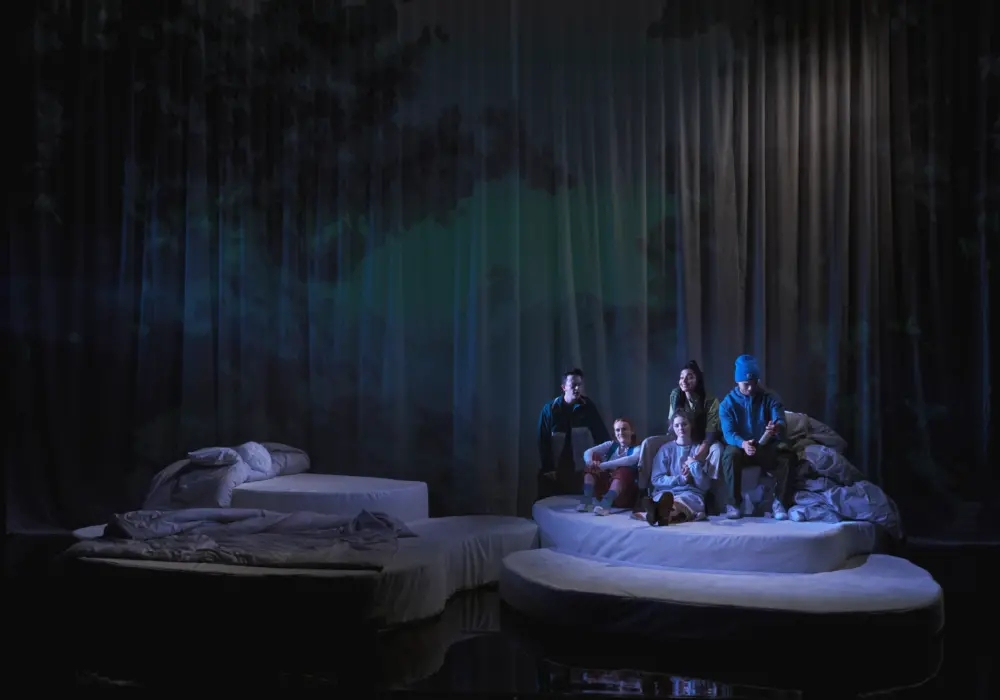Apart from an unresolved puzzle over who or what Orpheus is, Pilot Theatre’s decision to focus A Song for Ella Grey on a group of close-knit friends does justice to David Almond’s book that his own solo play script never could.
It’s time for Ella Grey at Northern Stage. Or, for those of us with long enough memories, Ella Grey round two. For those of us with long enough memories, this is in fact the second time Northern Stage has produced an adaptation of David Almond’s young adult novel for the stage. Seven years ago they did a solo play, written by David Almond himself and directed by then artistic director Lorne Campbell. That came hot off the heels of the publication and acclaim of the original book (not to mention a successful adaptation of another David Almond story over at Live Theatre), but wasn’t one of the most memorable ones. In retrospect, I think this vision was what I call “over-conceptualised” – an abstract staging of what’s already an abstract story, which ended up confusing everybody.
But … Pilot Theatre aren’t giving up that easily, and now they’re having a go. And if anyone’s going to do this right, it’s Pilot Theatre, who’s discovered they’re very good at doing adaptations of young adult novels. This time, it’s Zoe Cooper doing the adaptation – her biggest success to date is probably Jess and Joe Forever. The most obvious change from the original play? It’s gone from a solo play to an ensemble of five. This, I think, goes a long way to addressing two weaknesses of the original play.
Continue reading



